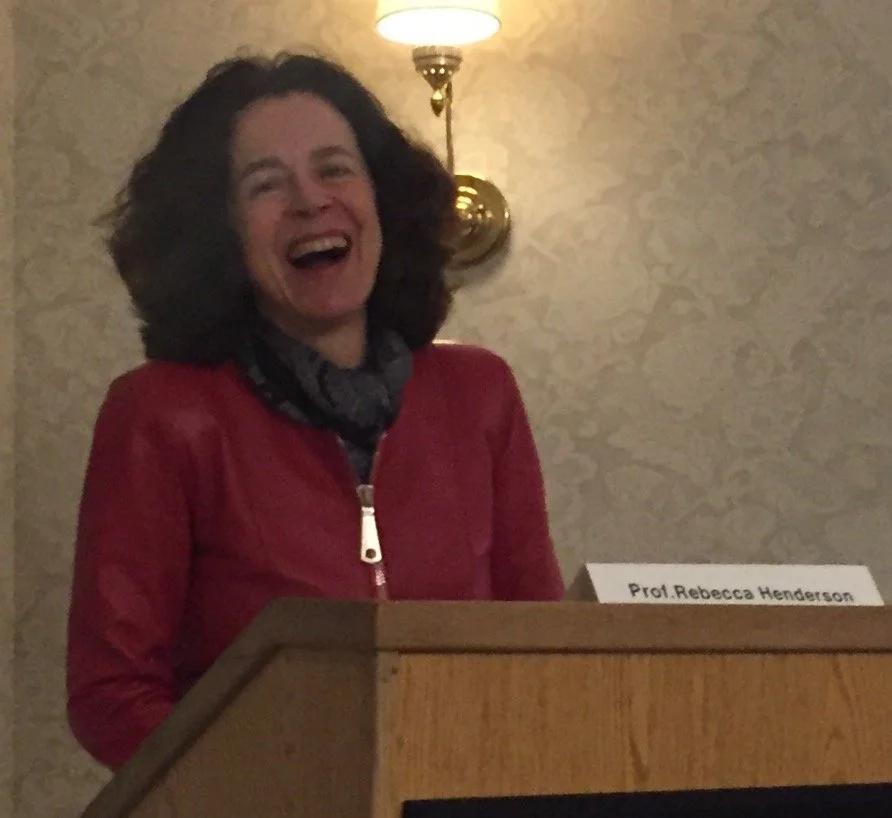Make Change through Hope not Fear
Sometimes, you chance upon a speaker whose message is so relevant, rich and rewarding that you feel the need to pass it on. So, let me tell you about Rebecca Henderson. She is the John and Natty McArthur University professor at Harvard with a joint appointment at its business school in the General Management and Strategy areas. Rebecca explores how organizations respond to large-scale technological shifts, most recently in regard to the environment and energy.
I met her in early April at a workshop at Harvard’s Zofnass Program for Sustainable Infrastructure, where I presented the business case for sustainable infrastructure. For her part, Rebecca gave participants a lightning-fast overview of her research about why change in corporations is hard.
Here are the highlights of how leaders generally respond to suggestions that their organizations become more sustainable. She cited four main responses – and they illuminate why organizational change is difficult.
1. Denial. It’s a leader’s first line of defense. Consider then-Microsoft CEO Steve Ballmer’s comment when first spying the Apple iPhone: “There’s no chance that the iPhone is going to get any significant market share. No chance.”
2. Interested, but dismissive. “I’m going to make any money.”
3. Not equipped to take your advice. “I don’t have the resources to make the change now.”
4. Overloaded. “The business is too busy to take up change now.”
Still, Rebecca thinks that change as grand as a sustainability transition can happen. Here’s how she explains it:
1. Deal with denial. Change through hope, not fear. Rather than approaching an organization with the contention it “will go bankrupt if you don’t do this,” which invokes a disagreeable “threat rigidity,” make your case from the standpoint of hope. The key is to get people away from their official view of the future, which they may see as a linear extrapolation from where they’ve been.
Conduct a real-time scenario analysis with key decision-makers, asking them, “What are the major uncertainties that keep us up at night.” Create a two-by-two matrix of possible scenarios (renewables expensive/renewables cheap; regulators move/regulators don’t move, etc.) Ask participants how they want to place their bets. Put probabilities around the matrix. They are likely to see that the official future they worry about has less than a 50-50 chance.
This helps them think systematically about the official world. While the matrix and probabilities don’t say the official future is wrong, it does suggest you probably cannot see the future if you are stuck thinking it will be like the past.
2. Make Money: Trigger innovative thinking. Find someone in the organization who has something to win if you convince them to lead the sustainability drive. If you find an organizational home and someone you can make a real success, it could help trigger innovative thinking and action. There’s still a lot of low-hanging fruit in the sustainability world because people have not been looking for it.
If we can optimize systems in different ways, we can see the system differently to identify new properties. We are likely to find there is money to be made. The secret corporate weapon is this: the most powerful ways to do new things is to really want to do them. And normally what you really want is more money. So, the key is to align and keep a ruthless focus on the bottom line as a reason why sustainability is important.
3. Equip to lead by de-shaming. Most people are ashamed to talk about sustainability in public because so many decisions are made at the margins. The key is to use the incredibly powerful moments of talking about change over a beer. This will drive change. Indeed, every investment is loaded with judgement, so unofficial conversations can have a lot of impact.
Rebecca believes that the demand for sustainability is so great that people who lead it “are going to make a lot of money and make a huge difference.” About the present time in the U.S., she posits that:
· The private sector is good at supporting government change since innovation brings costs down and demonstrations help make change acceptable.
· Businesses that act collectively (e.g., raising wages) through transparent collusion can bring about change beneficial to society.
· Business is one of the most trusted institutions.
· As soon as industry starts to cooperate and collaborate, they are reminded that a little government is really useful. At that moment, she believes, “We will rediscover the power of well-run government.”
Source:https://www.linkedin.com/pulse/make-change-through-ho
April 8, 2017

